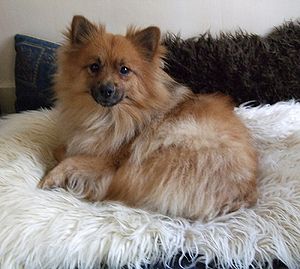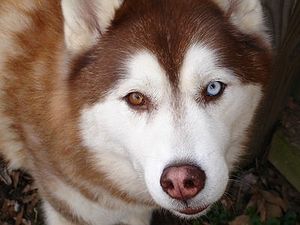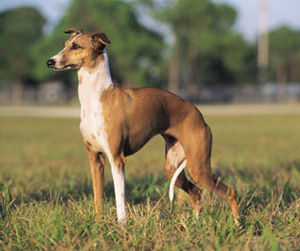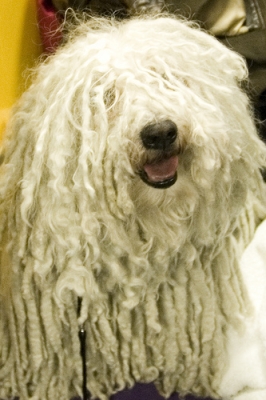 |
| Vital Statistics: |
| Place of Origin: Germany |
| Group: Companion, (Standard – Working dog) |
| Height: Giant Spitz, 16-17 in., Standard 11-14 in., Toy 9-11 in. |
| Weight: Giant Spitz 38-40lbs, Standard 23-41 lbs., Toy 18-22 lbs. |
| Life span: Giant 12-13 yrs, Standard 13-15 yrs., Toy 14-15 yrs. |
| Trainability: moderate |
| Good with children: with older, well-behaved children |
| Good with other pets: sometimes, with early socialization |
What is the origin of the German Spitz?
The German Spitz is the oldest breed in Central Europe. It is thought that the Vikings brought Nordic herding dogs like the Samoyed and these were the ancestors of the German Spitz. While the Standard German Spitz was a working dog, used on farms, the Giant and Toy German Spitz were companion dogs. Queen Victoria fancied the Toy German Spitz which was then called the Victorian Pom when imported to England. Later this dog became known as the Pomeranian and was developed as a separate breed.
What does the German Spitz look like?
The Giant German Spitz is 16-17 inches tall and weighs 38-40 lbs. The Standard is 11-14 inches and weighs 23-41 lbs. The Toy is 9-11 inches and weighs 18-22 lbs. Ears are triangular and set high. Eyes are medium size and dark. The tail curls over the back and to one side. The double coat is very thick and dense. Color of the Giant Spitz are solid, either white, brown or black. The Standard and Toy colors are varied. To keep the coat free from mats, it should be brushed 2-3 times a week.
What is the temperament of the German Spitz?
The German Spitz can be willful and must learn early that you are the leader. They require early obedience training and socialization. They are happy dogs and affectionate. They love attention and will cuddle with their family. However they are not recommended for families with young children. They are okay with older children who are kind. The German Spitz is reserved with strangers. They are barkers, usually at other animals and strangers. They make good companions for the elderly. The German Spitz can live in an apartment, but they do need vigorous daily exercise. A small yard will do.
What is the German Spitz used for?
The German Spitz is an excellent watchdog. While the Standard German Spitz was a working dog on farms, the Giants and Toys are companion dogs.
These dogs are related to the German Spitz – American Eskimo Dog, Chow Chow, Finnish Lapphund, Finnish Spitz, Icelandic Sheepdog, Keeshond, Schipperke, Shiba Inu and Siberian Husky.
Possible Health Issues
Epilepsy, eye problems, patellar luxation.
- Alaskan Klee Kai
- Bichon Frise
- Bichpoo
- Brussels Griffon
- Bull Terrier
- Bulldog
- Cardigan Welsh Corgi
- Cavalier King Charles Spaniel
- Chihuahua
- Chinese Crested
- Coton de Tulear
- Eurasier
- French Bulldog
- Hairless Khala
- Havanese
- Japanese Chin
- Japanese Chin Dog
- Keeshond
- Lhasa Apso
- Lowchen
- Maltese
- Mi Ki
- Miniature Pinscher
- Moscow Toy Terrier
- Norwegian Lundehund
- Papillon
- Pekingese
- Pomeranian
- Poodle
- Portuguese Water Dog
- Pug
- Sanshu
- Schipperke
- Schnorgi
- Shiba Inu
- Shih-Tzu
- Tibetan Spaniel
- Yorkshire Terrier
- Akbash Dog
- Alaskan Malamute
- Anatolian Shepherd Dog
- Appenzell Mountain Dog
- Belgian Malinois
- Boxer
- Burnese Mountain Dog
- Canaan Dog
- Chinook
- Deutscher (German) Pinscher
- Doberman Pinscher
- Dogue de Bordeaux
- Estrela Mountain Dog
- Giant Schnauzer
- Great Dane
- Greater Swiss Mountain Dog
- Greenland
- Irish Red & White Setter
- Kai Ken
- Korean Jindo Dog
- Kuvasz
- Laika
- Leonberger
- Newfoundland
- Norwegian Elkhound
- Rat Terrier
- Rottweiler
- Saint Bernard
- Samoyed
- Siberian Husky
- Standard Schnauzer
- Tibetan Mastiff



